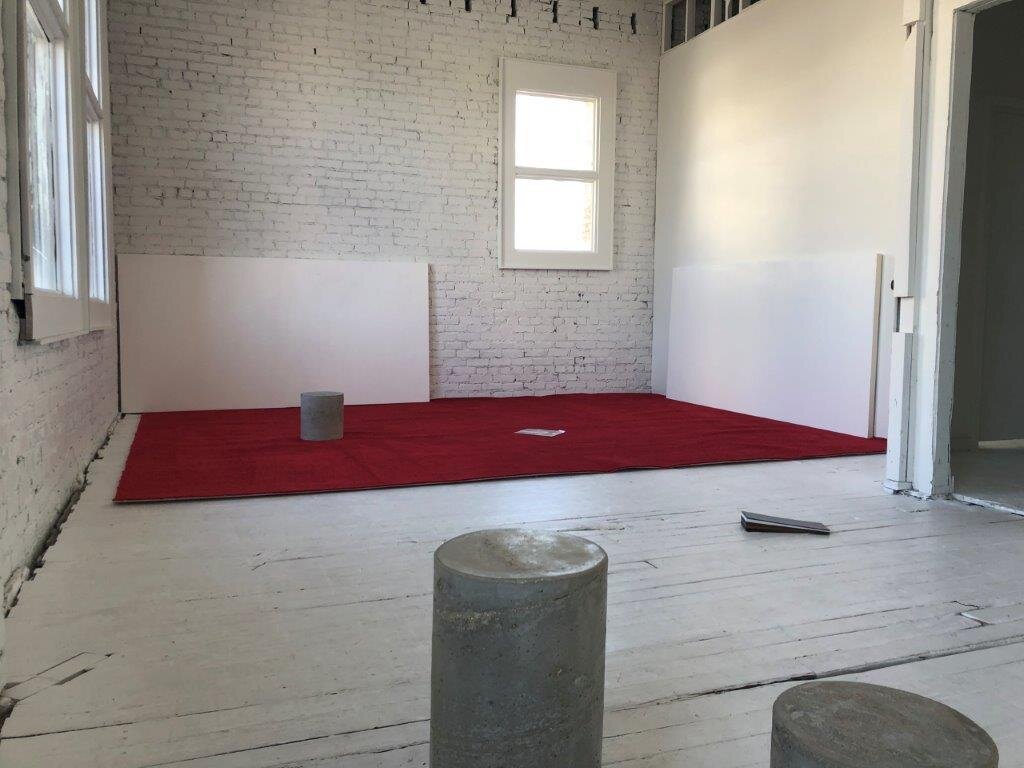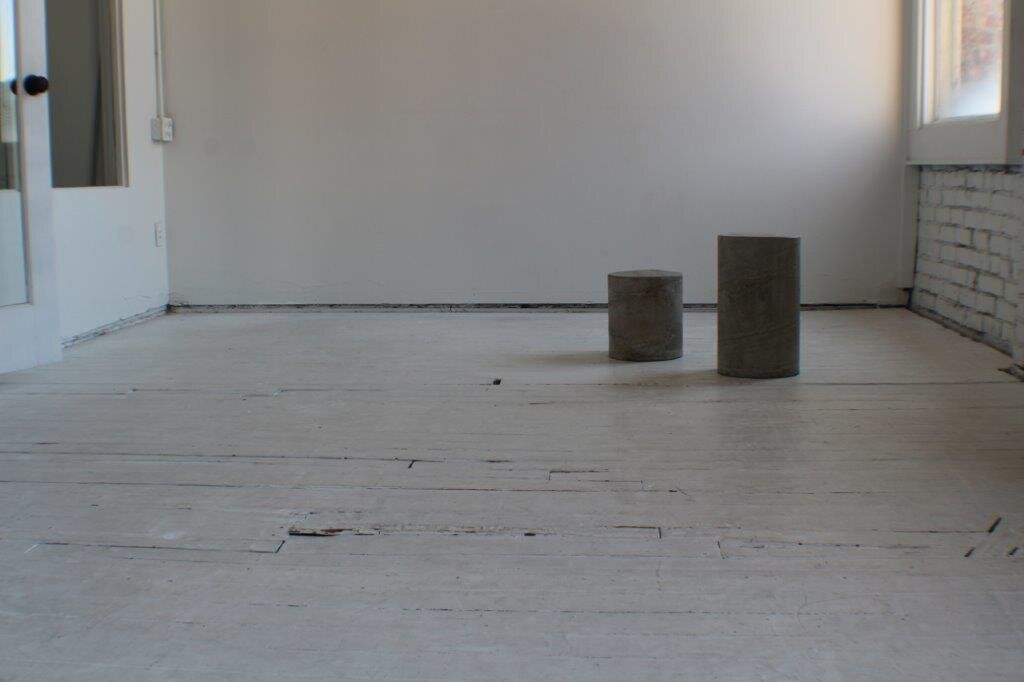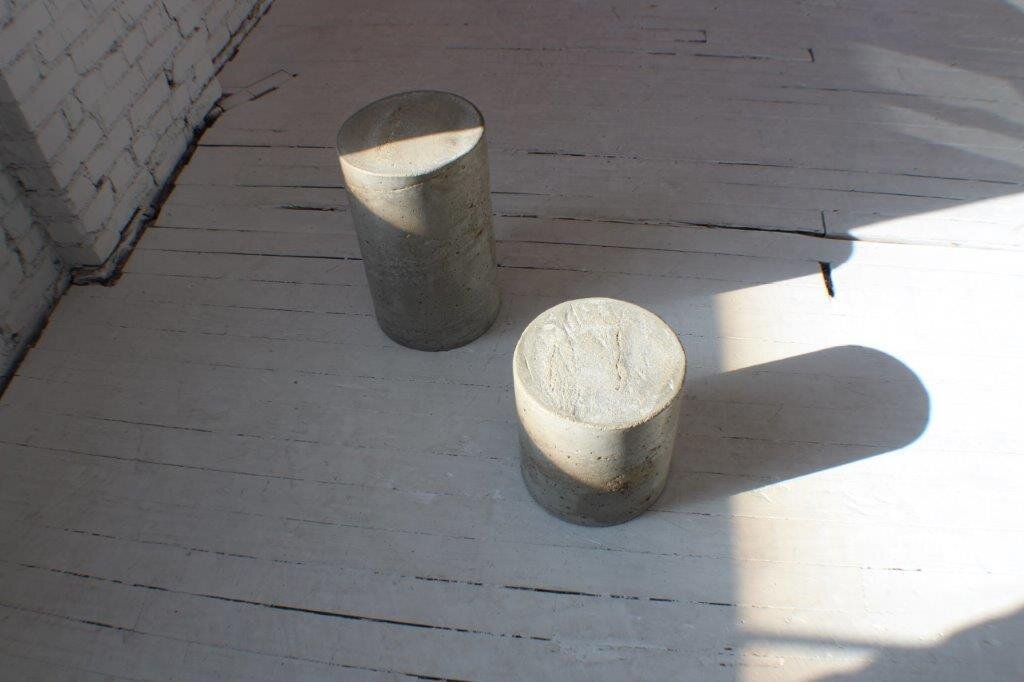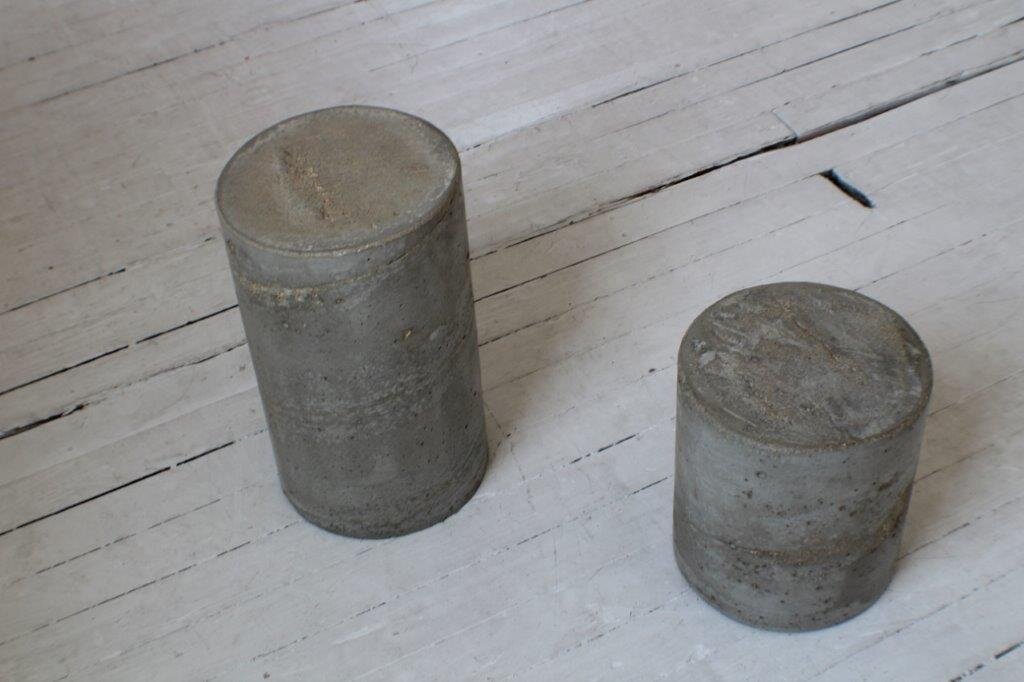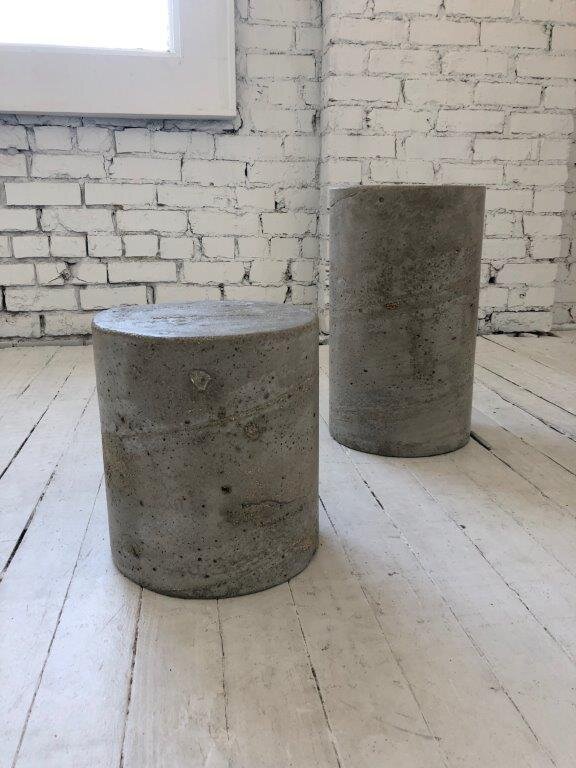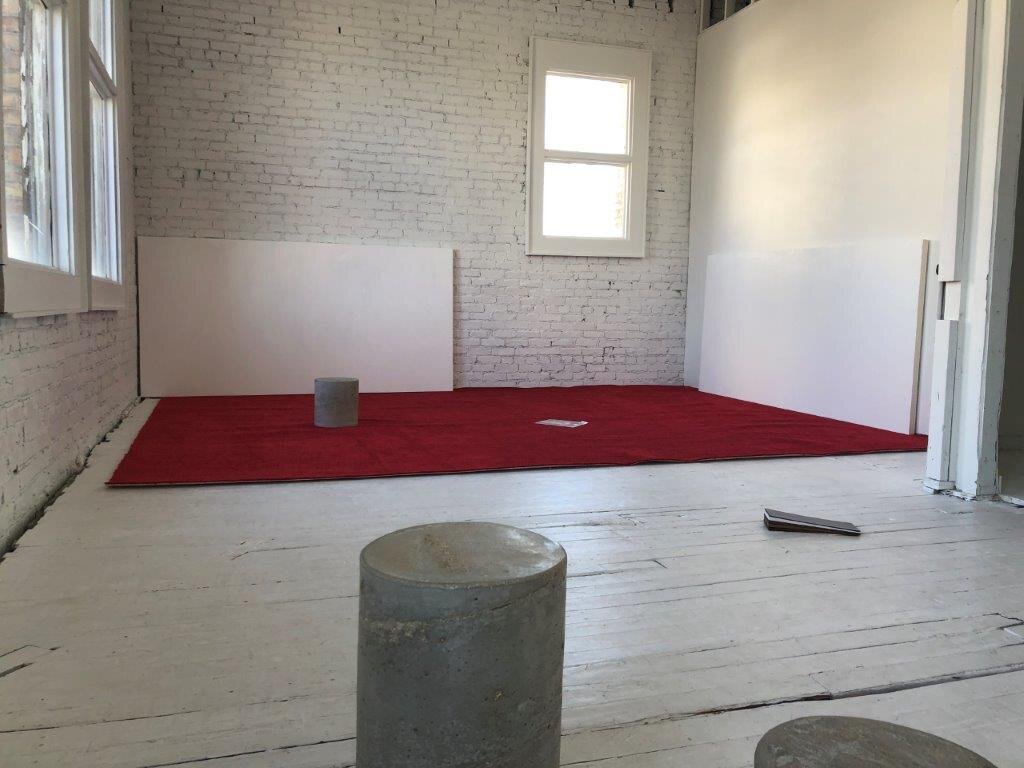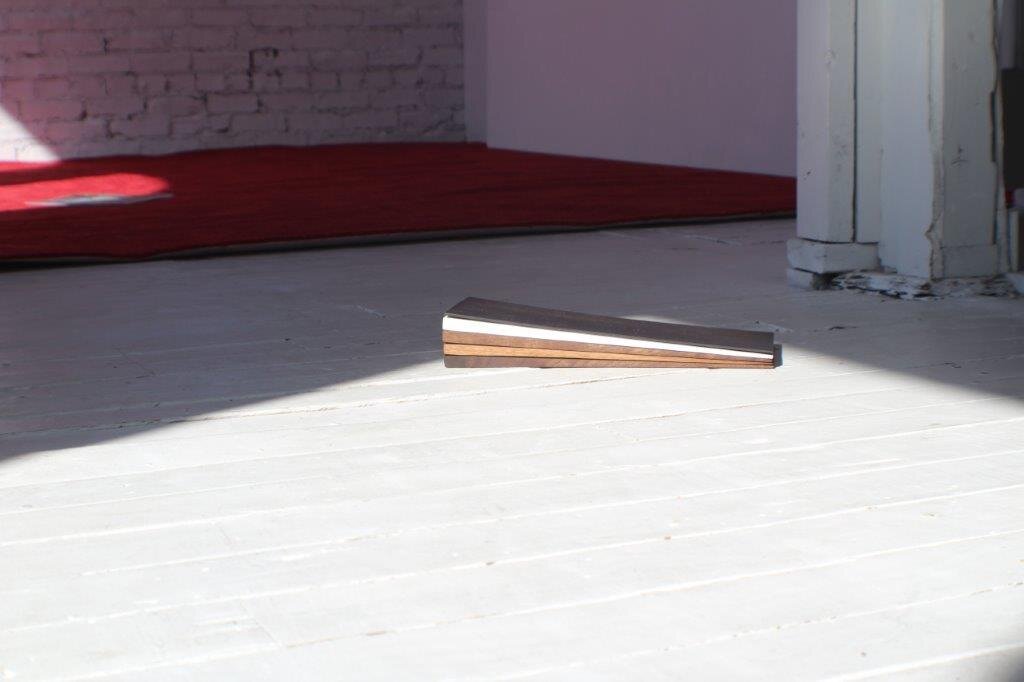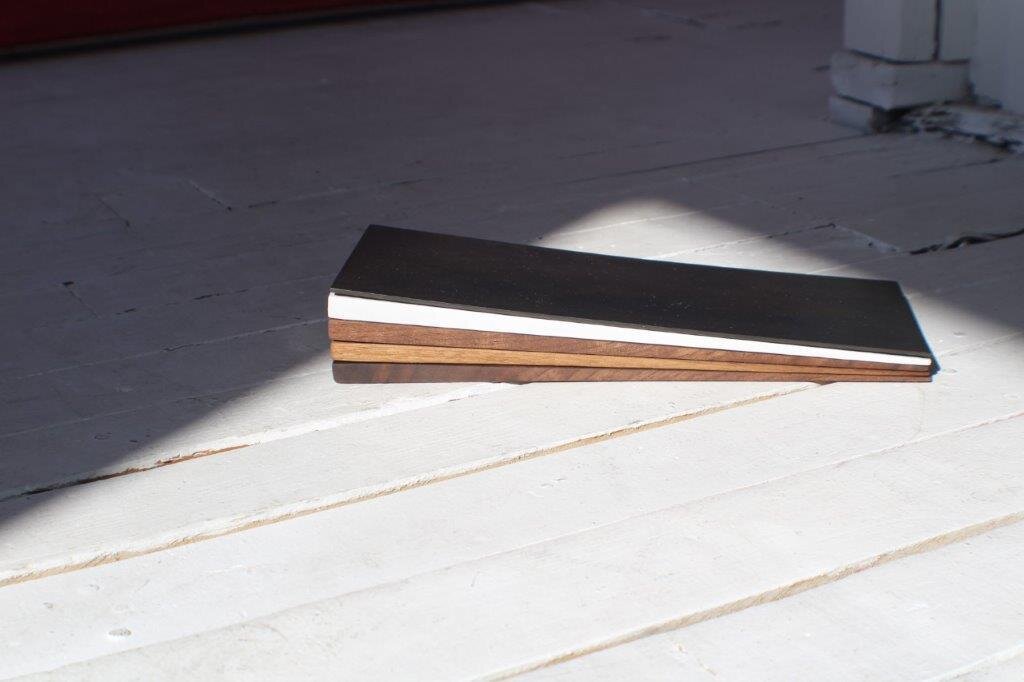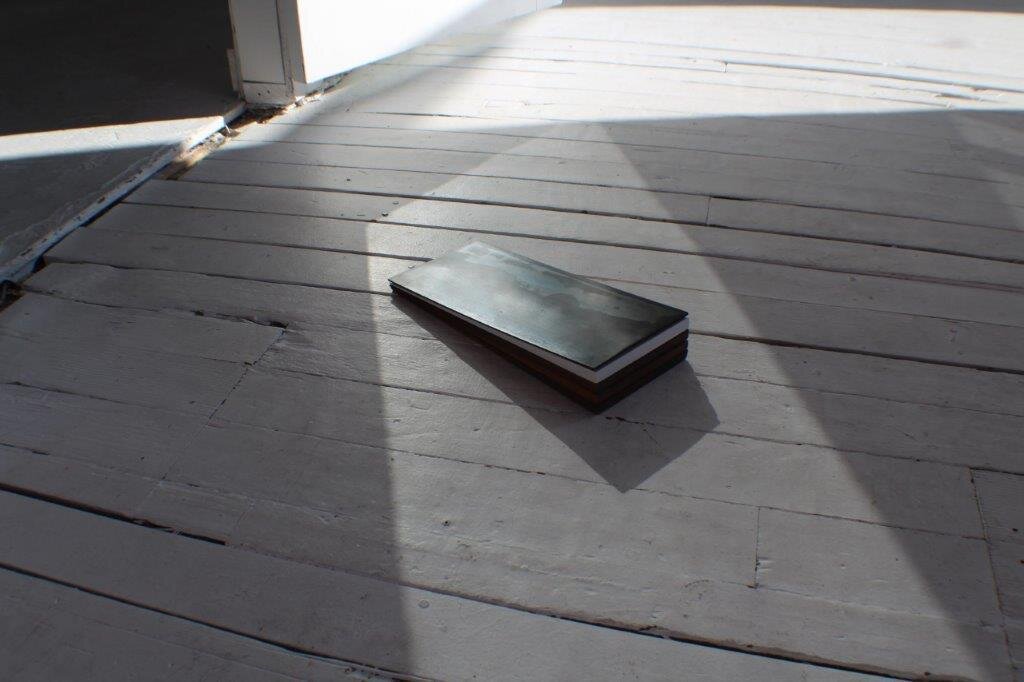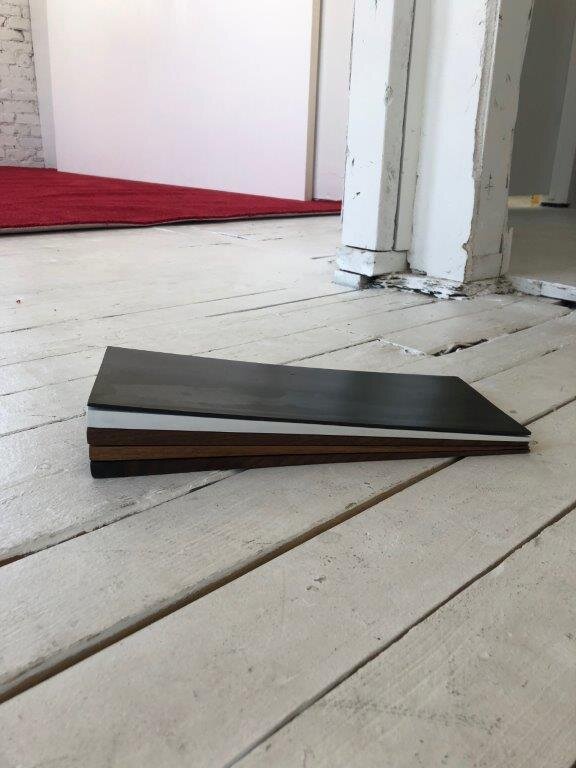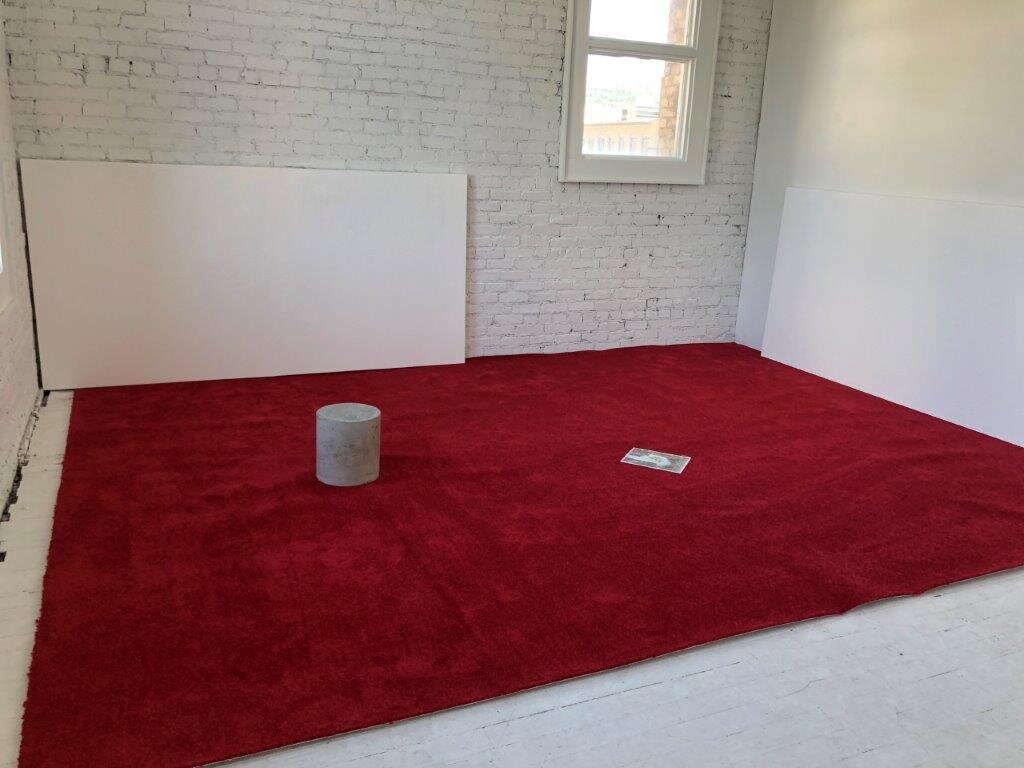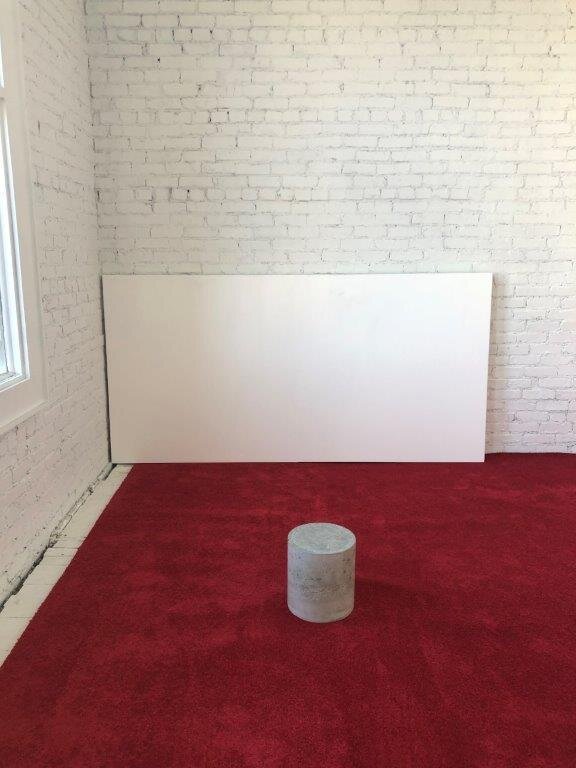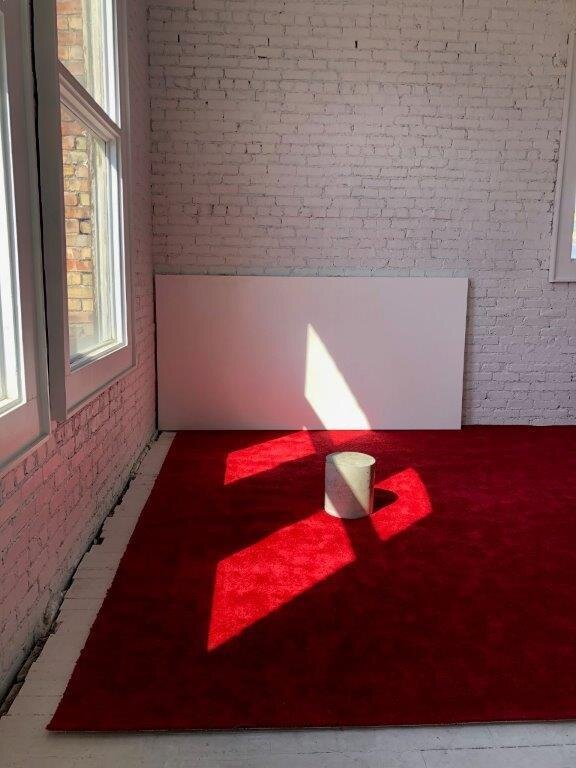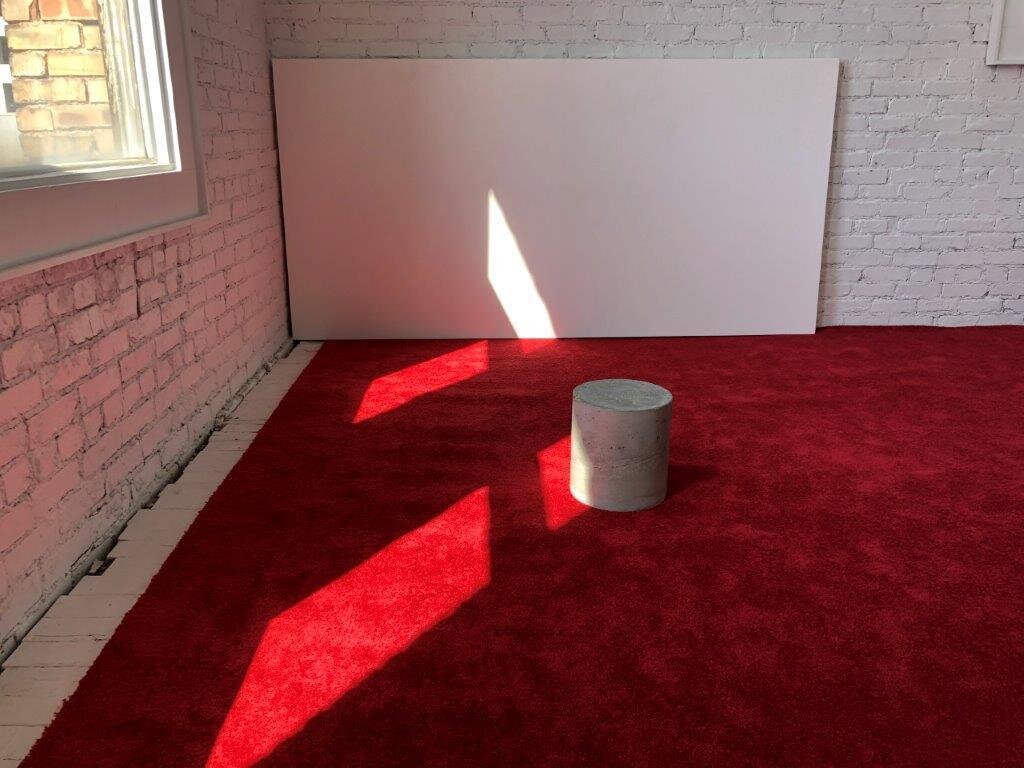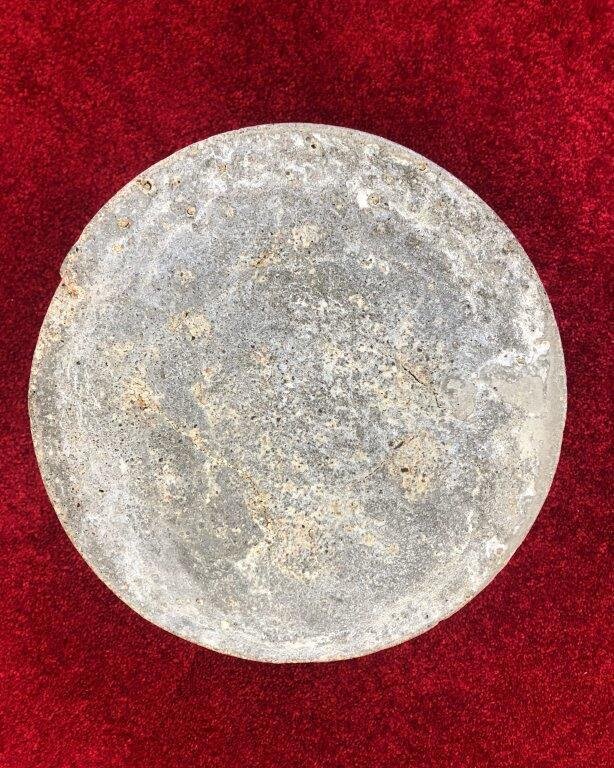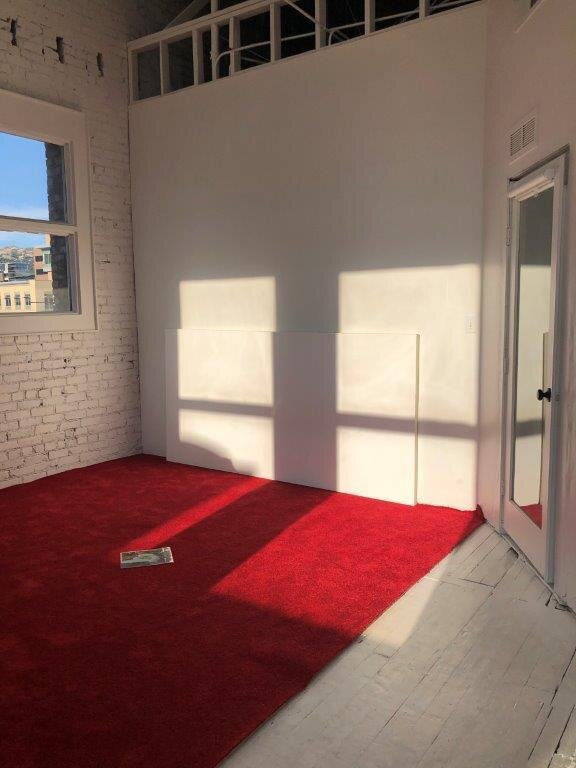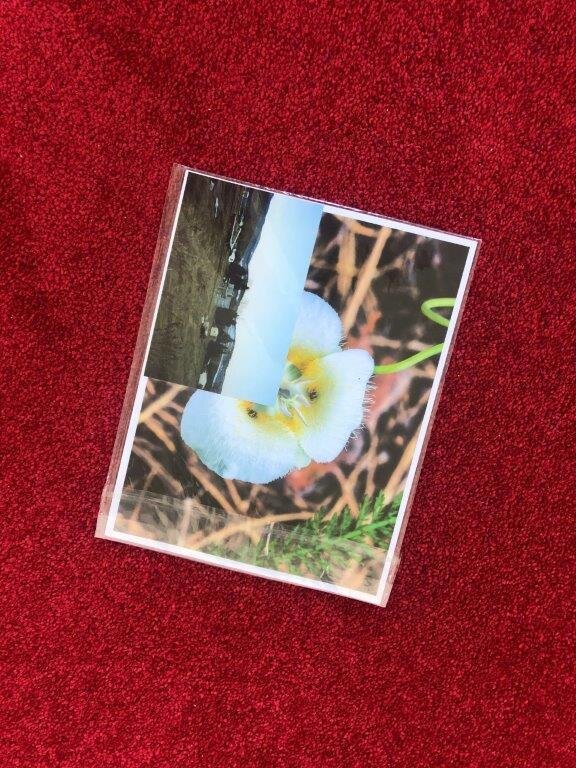The elements conspire against nature
John Knight
September 13, 2019
@
Final Hot Desert
Excerpt from, “Letter from a prisoner in the isolation wing: June 16, 1972 - February 9, 1973”:
The feeling your head is exploding (the feeling the top of your skull should really tear apart, burst wide open)—
The feeling your spinal column is pressing into your brain—
The feeling your brain is gradually shriveling up, like baked fruit—
The feeling you’re completely and surreptitiously wired, under remote control—
-Ulrike Meinhof
The elements conspire against nature is an exploration of labor and departure under capitalism. This exhibition eyes an unnatural landscape of readymades. Fabricated from sites of industrial labor, objects taken from prison-wings, famine histories and waste piles, Knight’s turns turns toward detention and mechanization, and attempts poetry in the face of work-as-liberty.
Object List:
The blessing before supper, 2019, is a set of photographs in an archival sleeve. The artwork takes its title from Charles de Groux’s painting of the same name. Accomplished in 1861, ... de Groux' social realist works contain many religious overtones and references. This is obvious in [sic] The blessing before supper, a solemn depiction of a peasant family saying grace before supper. The painting was closely linked to Christian representations the biblical Last Supper.1 One photograph features a Calochortus nuttallii flower (sego lily). This flower and its bulb was historically used as a famine food by Mormon settlers but was known nutrition source by the Hopi, Havasupai, Navajo, Southern Paiute, Gosiute, and Ute peoples.2 Kate C. Snow, President of the Daughters of Utah Pioneers, in a letter dated April 17, 1930, says [sic] that "between 1840 and 1851" food became very scarce in Utah due to a crop-devouring plague of crickets, and that "the families were put on rations, and during this time they learned to dig for and to eat the soft, bulbous root of the sego lily. The memory of this use, quite as much as the natural beauty of the flower, caused it to be selected in after years by the Legislature as the floral emblem of the State."3 This photograph was purchased by the artist through Google.Shopping via Sunshine Haven Photos (sunshinehavenphotograpy.com). Further, another photograph was taken during a series of dérives that captures industrial scrap, trailer homes, waste, and a mountain landscape. Knight has put the theory of the dérive by Guy Debord into practice during daily capitalist work. The dérive involves playful and constructive behaviors and an awareness of psychogeographical effects. They take on a very different approach from just strolling or taking a journey. In a dérive the individual, or several individuals, drop their everyday tasks and activities and go on with movement and action. They let themselves be drawn by the attractions of the terrain and what they find there. They do not have a motif in mind, they are just experiencing the city open to new perceptions. A dérive should not be merely one or two hours, the individual should not be aware of the time. [sic] The intention is to have a mental map of duration and your surroundings.4
Untitled (all day and a night) & Untitled (back door parole), 2019, are two white monochrome paintings. They are 48” x 72” each, and are finished with one-shot enamel gloss white paint. They are hung to touch the gallery floor. Monochrome painting for the artist provides a framework for looking at the context in which art is presented.5 As such, the paintings are positioned to suggest horizontal wall paintings found in public schools, prisons and addiction treatment centers.
Untitled (dance on the blacktop), 2019, is an installation of 300 sq ft of red carpet that takes its name from the euphemism for getting stabbed while incarcerated.7
Grasping for the divining rods (writing stools),8 2019, are a grouping of cement stools based off of writing benches found in solitary confinement cells at the United States Penitentiary, Administrative Maximum Facility (USP Florence ADMAX or ADX Florence) in Florence, Colorado. [sic]... colloquially known as the “Alcatraz of the Rockies” — the ADX is the highest-security federal prison in the country, located in the Colorado mountains. It houses some of the more notorious inmates in recent American history, from Boston Marathon bomber Dzhokhar Tsarnaev to September 11 conspirator Zacarias Moussaoui to Oklahoma City bomber Terry Nichols to Robert Hanssen, the FBI agent who became a Soviet spy. Inmates at the ADX are held in solitary confinement for 23 hours a day, and because of their crimes, many are never released.9 Proponents of administrative segregation and the supermax model argue that solitary confinement is necessary for maintaining the safety and security of the entire correctional system. Some inmates, it is argued, are so disruptive to the orderly running of a facility that they simply cannot or should not be maintained among the general population.10 Travis Dusenbury described the alien architecture of the institution as lacking a horizon: It wasn’t like any of the prisons I’d been to, and I’ve been to a lot of prisons. I’ve been locked up in some isolated, rural places, but at least at those places I could always see a highway, see the sky. [sic] But at the ADX, you can’t see nothing, not a highway out in the distance, not the sky. You know the minute you get there you won’t see any of that, not for years and years. [sic] You’re just shut off the world. You feel it. It sinks in, this dread feeling.11
Banner Issue-Wedge, 2019, is reminiscent of a shim used to prop open a heavy door. It is 4” x 6” x 12” and is made with oiled steel that is stacked on stained and oiled maple pieces.
Standards Zine, 2019, is a Xerox copy booklet of Standards for Building Materials, Equipment and Systems used in Detention and Correctional Facilities by Robert D. Dikkers and Belinda C. Reeder, 1987. It is 5.75” x 4” and is editioned at 1 for this exhibition. The inclusion of this booklet comes from an email exchange, and acts as punctuation point inspired by a critique of this project by artist Taryn Tomasello: I wonder how it would feel if you viewed the press release as copy that goes on the website of the "institution" you are creating? Like what if you are writing the description of an ideal facility from the eyes of the incarcerator? How would it change the description of the space and your work? Why are the descriptions of facilities missing from institutional press releases (i.e.websites)?12
1 Wikipedia, “Charles de Groux,” Accessed August, 21 2019. https://en.wikipedia.org/wiki/Charles_de_Groux. 2 Wikipedia, “Calochortus nuttallii,” Accessed July 2019. https://en.wikipedia.org/wiki/Calochortus_nuttallii.
3 Utah’s Online Library, “Utah’s State Flower - Sego Lily,” Accessed August 29, 2019. https://onlinelibrary.utah.gov/symbols/ flower.html.
4 “Theory of the Derive,” The Archiologist. Accessed August 29, 2019. https://thearchiologist.com/article/theory-of-the-derive. 5 The American Institute of Thoughts and Feelings. “John Knight: Sympathetic Noise.” Press Release (October 2018):
https://americaninstituteofthoughtsandfeelings.com/Sympathetic-Noise.
6 Morris, Matt. “Exhibition Imaginaries and the Expanded Senses No. 4,” Fragrantica. June 23, 2019. Accessed August 2019. https://www.fragrantica.com/news/Exhibition-Imaginaries-and-the-Expanded-Senses-No-4-12537.html.
7 Soniak, Matt. “Ghetto Penthouse Prison Lingo to Keep you Alice on the Inside,” The Atlantic (October 17, 2012): https:// www.theatlantic.com/health/archive/2012/10/ghetto-penthouse-prison-lingo-to-keep-you-alive-on-the-inside/263778/.
8 Hyte, Siera. Conversation with John Knight. August, 2019. Missoula Art Museum. Missoula, Montana. The name for this artwork takes its name from a second hand conversation with artist Siera Hyte, who described a dialogue on spirituality and divinity with landscape painter Richard Lennox during his visit to the Missoula Art Museum. Hyte and Knight work together in engagement and education at the Missoula Art Museum.
9 Dusenbury, Travis. “My Life in Supermax.” Interview by Eli Hager. The Marshall Project, January 8, 2016. Accessed June 2019. https://www.themarshallproject.org/2016/01/08/my-life-in-the-supermax.
10 National Criminal Justice Reference Service. Accessed July 2019. https://www.ncjrs.gov/pdffiles1/nij/249749.pdf.
11 Dusenbury, Travis. “My Life in Supermax.” Interview by Eli Hager. The Marshall Project, January 8, 2016. Accessed June 2019. https://www.themarshallproject.org/2016/01/08/my-life-in-the-supermax.
12 Taryn, Tomasello, email to John Knight, July 16, 2019.
-
John Knight (b. 1986) is an artist living in Montana. He’s had recent exhibitions at Private Places and Muscle Beach in Portland, The American Institute of Thoughts and Feelings in Tucson, and Julius Caesar in Chicago. Curatorial projects include: Williamson | Knight, and Cherry and Lucic in Portland, and THE PINK HOUSE (Jan. 19 1995) at Bad Reputation in Los Angeles. Knight works full-time in engagement and education at the Missoula Art Museum, and as a part-time food delivery driver.

